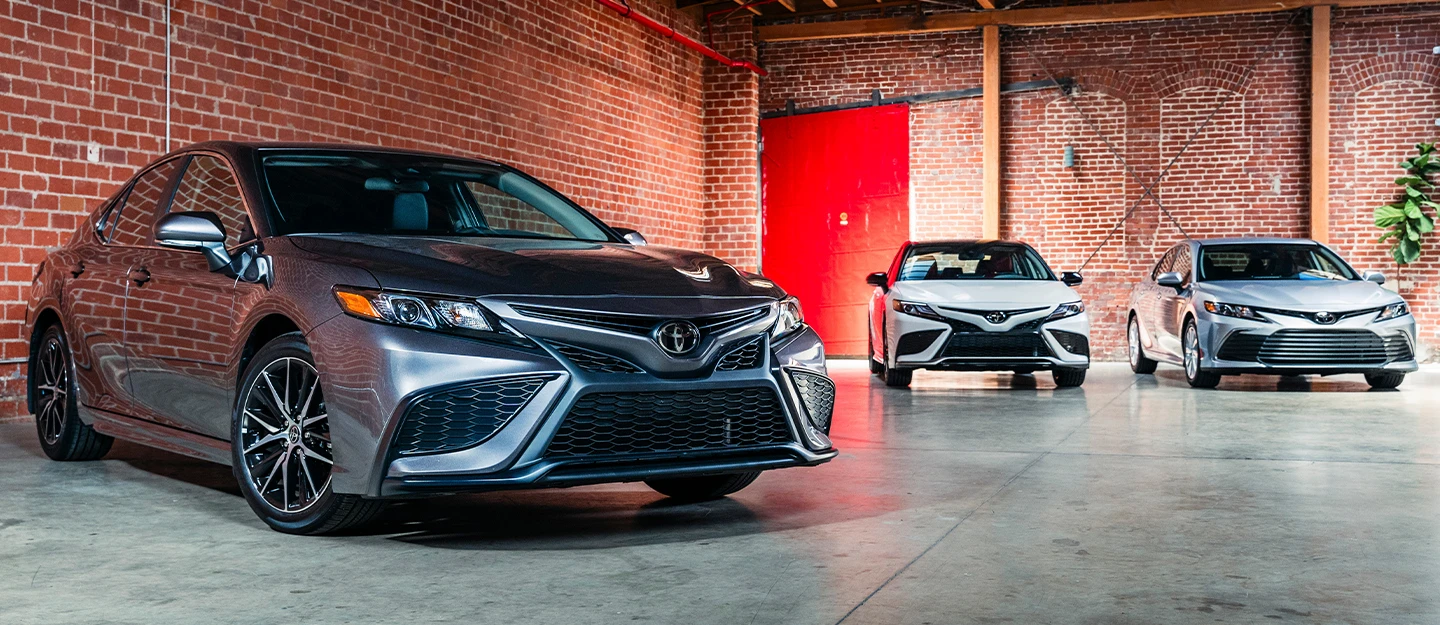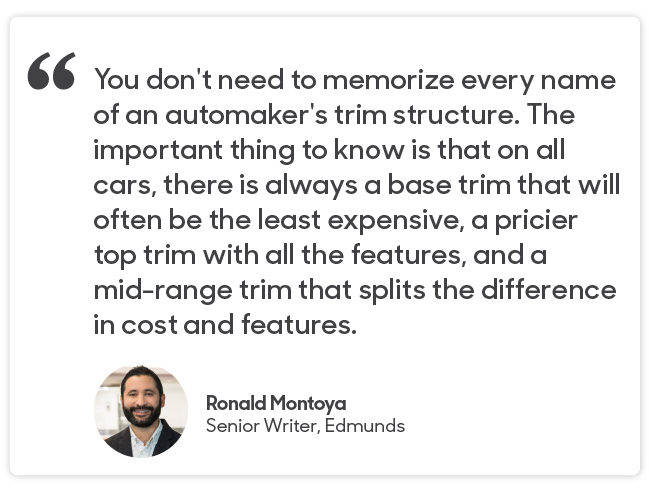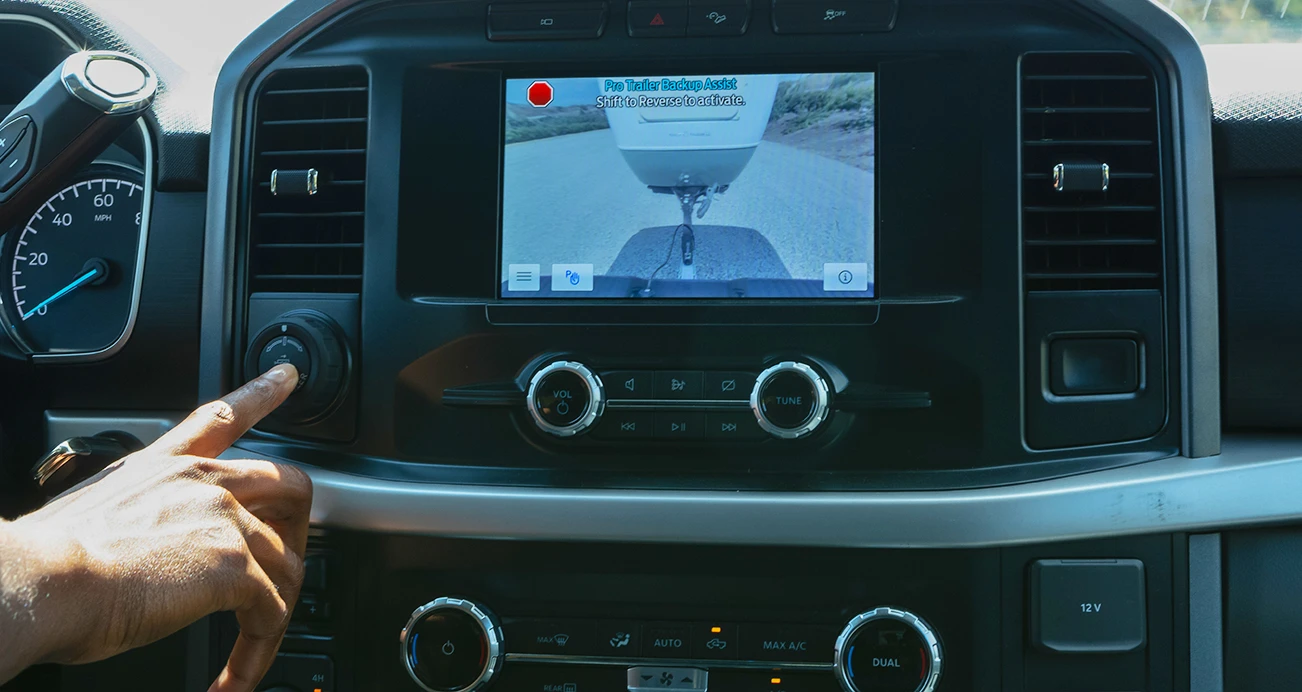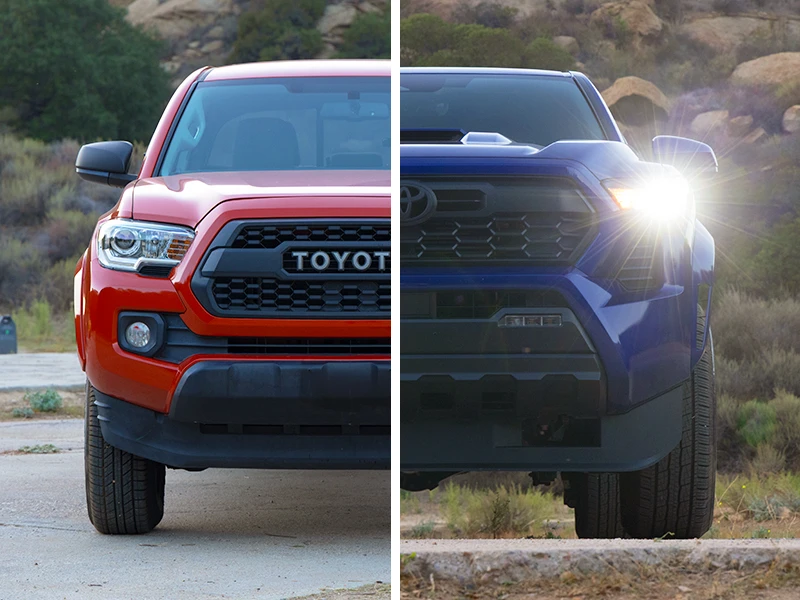
What are car trim levels and why are they important?
With thousands of vehicles in our inventory, we’re here to help make car research easier for you. We’ve partnered with car review experts from Edmunds to weigh in on what matters most when you’re looking to buy a truck or car.
***
You’ve decided on the car you want and now comes the fun part, choosing the features you want. This can feel like a tall task if you're unfamiliar with terms such as trim levels, styles, packages, and options.
If you're new to cars, or just haven't bought one in a while, you may be asking yourself: What exactly is a trim level? Trims help describe what features and equipment a car comes with. Lower trims have fewer, basic features, while higher trims have more plentiful, advanced ones, with several trim levels in between.
For used cars, however, this trim information can be harder to come by. Most automaker websites won't show feature differences from prior year models. So if you're looking at two used Toyota 4Runner listings, how would you know what the TRD Sport offers versus a TRD Pro?
With this in mind, here are the basics about vehicle trim levels, styles, options, and packages. Knowing these terms will increase your overall car knowledge and help you choose the right used car with the right set of features.
Car Identification Basics: Make and Model
Before we get to trim levels, we need to start with the basics of a car's identity. "Makes" are the companies that make the cars, such as Jeep, Toyota, Ford, or BMW. "Models" are the names of individual vehicles. Some brands use word-based model names such as Camry, Explorer, Silverado, or Telluride. Others (often luxury automakers) use alphanumeric model names such as F-150 (Ford), MDX (Acura), RX 350 (Lexus), and GLC (Mercedes-Benz).
Car Trim and Body Type
Car trim levels determine what features a car will have. If you've heard the term "base model," it often means the entry-level trim, with the fewest options. Higher trim levels will either add more features or replace them with something else. For example, cloth seats are replaced with leather seats, or a low-powered engine is replaced with a more powerful one. When someone refers to a "top-of-the-line" or "fully loaded" model, they're likely talking about the highest trim with all the features.

Trim levels
Like model names, trim level names are all over the map, with some using words such as Touring, Grand Touring, Limited, or Platinum, while others use letters such as EX, SX, LTZ, and more. The good news is that automakers are usually consistent about how they apply trim levels to their vehicles. For example, on nearly every Toyota an LE will be a lower model, an SE tends to have more features and sporty elements, while a Limited or Platinum often indicates the highest trim.
With Chevrolet vehicles, the LS trim is often the entry-level, while an LT trim usually falls somewhere in the middle of the trim lineup. Sometimes the LT will have a number associated with it (1LT or 2LT), which indicates higher trims above the LT.
Trucks can be the exception to the consistency rule because they tend to have trim names that differ from those on SUVs or other vehicles from the brand. The base model of the Toyota Tundra pickup, for example, is called SR whereas the base model of the Toyota RAV4 SUV is called LE. There are also uniquely named higher trims for trucks such as Capstone, King Ranch, Longhorn, etc.

Body types
A body type or style is a term used to describe variations within a model, such as the number of doors or whether it is a convertible. For example, let's say you want a Honda Civic EX (make, model, trim). But the Civic you're looking at is available in three different body types—a sedan, coupe, or hatchback. Checking off the body type you want in the search filters will make locating it much easier. Other examples of types or styles include coupes and wagons.
Engines, hybrids, and off-road variants
There are times when a certain model is upgraded with significant changes to its engine or drivetrain within the same body type. These can be considered a different style due to how different the vehicle performs with the changes. Examples of these include hybrids (Ford Escape Hybrid), plug-in hybrids (Kia Niro PHEV), electric vehicles (Hyundai Kona EV), off-road specialty vehicles (Ford F-150 Raptor), or high-performance variants (BMW M3).
These variants will usually, but not always, follow the same trim structure as the rest of the brand's lineup. These days, it's becoming increasingly common to see a hybrid version of a model incorporated into the standard trim structure (the 2023 or newer Honda Accord, for example) as opposed to being sold as a distinct model.
Ronald’s take:
If you need help learning the trim levels of a car you found on the CarMax website, head to the research page of the year, make, and model you're interested in. Click on "Trims" to see a breakdown of all the features that come with a certain trim level.
Options and Packages
You may also come across options and packages as you shop for your next car. Options are features that weren't included in either the standard features or the upgrades from going up in trim levels. Examples of options include an upgraded stereo system, a panoramic sunroof, captain's chairs on an SUV, driver-assist systems, and even a different engine. Packages are essentially a group of options that have been bundled with a common theme such as technology, convenience, cold weather, towing, or off-road.

Options
For used car shoppers, the thing about individual options is that you can’t count on that feature being on every car like you can with trim-level features. It’s important to remember that if you’re looking for a feature that's usually an individual option, such as all-wheel drive, you need to look for that feature first, to avoid getting too invested in a vehicle that’s missing something you want.
Packages
Look for commonly bundled items to determine whether a used car you're looking at has a certain package you're interested in. For example, a cold-weather package might include features such as heated seats, heated steering wheel, headlight washers, and all-weather floor mats. A technology package might include hands-free cruise control, a larger touchscreen, or automated parking assistance. Packages don't always have descriptive names, however. Some have vague names such as Convenience Package, Premium Package, or Equipment Group 300A.
Ronald’s take:
We recommend visiting Edmunds and reading our reviews to get a detailed breakdown of the packages and options from when the car was new and to identify any must-have features you're interested in today. Once you see what other features were bundled in a package, it will help you identify an ideal candidate when you're browsing for used cars.
Are There Downsides to a Top Trim Vehicle?
Just because a car offers a ton of features, doesn't mean you'll necessarily need or use them all. As you might expect, top trim vehicles tend to cost more than a base model. Additionally, highly optioned vehicles tend to lose their value quicker because the next buyer is less likely to be interested in technology that is no longer on the cutting edge. For example, that cutting-edge navigation system when the car was new might be out of date by the time the second or third owner is interested in buying it.
Ronald’s take:
There's a balance you'll need to strike between the features you need and what you can afford. Once you speak the language of makes, models, trims, styles, and options, you'll have an easier time finding the perfect car for you and your budget.




